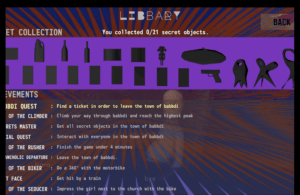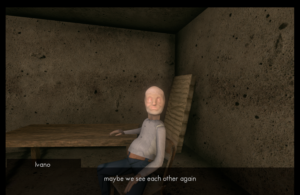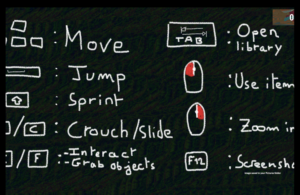
 The game I played is called “BABBDI,” created by Sirius Lemaitre and Léonard Lemaitre. The game was released in December 2022 and it’s free for online use in the following platforms: Windows, MacOs, or Steam/Linux. I played the game on Steam to download it and had the feel for a game engine that was new to me. The game’s target audience seems to be those who enjoy abstract and surreal experiences, with a focus on immersion and exploration.
The game I played is called “BABBDI,” created by Sirius Lemaitre and Léonard Lemaitre. The game was released in December 2022 and it’s free for online use in the following platforms: Windows, MacOs, or Steam/Linux. I played the game on Steam to download it and had the feel for a game engine that was new to me. The game’s target audience seems to be those who enjoy abstract and surreal experiences, with a focus on immersion and exploration.
At glance, the game is a short, first person exploration experience with a light narrative, with the goal of meeting the inhabitants of the district and learning how to escape. You can exchange dialogue with the citizens, unlock special movement abilities, and collect objects. The walking game tells the story through the dialog of the citizens of the district you encounter, and how they look. The more you walk, the more people you interact with that give you a sense about life at BABBDI.
Important aesthetics of the game include: discovery, fantasy, narrative, and challenge through multiple dynamics and mechanism. BABBDI places the user in an unknown world, and the commands of the arrow keys up, down, left, right, as mechanisms to allow the user to explore the environment and discover the walls and doors of the space. The cursor of the mouse, another important mechanism, allows the user to look in all different directions, helping provide a 360 discovery. I personally thought the 360 view reassured me as a player that I was getting full information and should be engaged to all my surroundings. Moreover, there is fantasy as the design of surreal landscapes and abstract art style help to immerse the player in a dream like world that feels both familiar and alien. In terms of narrative, you as a user are on a journey to collect 20 items and have achieve ments to leave the city, so you have the narrative of meeting people from the district and having them tell you things that can be useful for your escape. Lastly, there is the element of challenge given that you need to find a set of tools and people, and some characters are definitely easier to find than others. For instance, I found the first old man relatively quickly into the game, but finding the elevator with the next clue took me some poking around rooms.
ments to leave the city, so you have the narrative of meeting people from the district and having them tell you things that can be useful for your escape. Lastly, there is the element of challenge given that you need to find a set of tools and people, and some characters are definitely easier to find than others. For instance, I found the first old man relatively quickly into the game, but finding the elevator with the next clue took me some poking around rooms.
In terms of architecture, up until what I played, felt like one big arc in which you were learning the rules, getting to know the character, and used the elements that you found on the way until you eventually achieved your goal. There was no feedback basically about how you were doing except for how many total items you had collected in relation to how close you were to finish the loop, which was interesting but not my favorite because I couldn’t know how much time it was going to take me.
However, one potential epic fail of BABBDI is its lack of clear narrative coherence. While the game’s surreal landscapes and mysterious narrative fragments can be emotionally evocative, the lack of a clear story or thematic throughline may leave some players feeling confused or unsatisfied. After like 15 minutes of playing the game and not necessarily advancing or getting an achievement, you are roaming pointlessly around not knowing how to get “hotter” to the next thing. I personally did not last long because it got so challenging without hints that I gave up.
To improve the game, it might be beneficial to add more explicit narrative elements or gameplay mechanics to create a stronger sense of purpose or direction for the player. Additionally, offering more explicit thematic guidance could help to make the game’s surreal imagery and abstract narrative more accessible to a wider audience. For instance, having the dialogue of the characters being more explicit to hint how to get the next achievement would have kept me more engaged. Clearer narrative would make the use of the mechanisms to move around more directioned, it feels pointless knowing how to move but not knowing where.



